Networks like giffgaff, Sky Mobile & Tesco Mobile piggyback on O2’s network for coverage.
 If you’d like to access O2’s coverage on your mobile phone, it isn’t always necessary to be an O2 customer. That’s because a number of other “virtual network operators” piggyback on O2’s network for coverage.
If you’d like to access O2’s coverage on your mobile phone, it isn’t always necessary to be an O2 customer. That’s because a number of other “virtual network operators” piggyback on O2’s network for coverage.
You can also access an O2 mobile signal when you’re using a SIM card from giffgaff, Sky Mobile or Tesco Mobile. All of them will give you access to both 4G & 5G coverage on O2.
In this article, we’ll look at the mobile networks that offer coverage from O2. We’ll start by looking at the best value deals with O2 coverage including SIM-only deals, unlimited data plans and Pay As You Go bundles. We’ll then look at each mobile network in more detail, including the specific features and plans they offer.
| O2 Coverage: | 99% UK population coverage |
|---|---|
| Networks Using O2: | |
| Best SIM Only Plans: | |
| Best Unlimited Data Plan: | £20 for unlimited data on Sky Mobile |
| Best For Roaming: | O2 & Tesco Mobile (up to 25GB EU roaming on O2 & no cap on Tesco Mobile) |
| Best For Customer Benefits: | O2 Priority & Sky VIP |
| Best Pay As You Go Plan: | 20GB data for £10 on giffgaff (with no contract & no credit check) |
Contents
Overview Of Networks Using O2
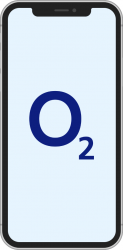 Besides O2, there are currently three other mobile networks that offer coverage from O2’s network in the UK. These networks are giffgaff, Sky Mobile and Tesco Mobile.
Besides O2, there are currently three other mobile networks that offer coverage from O2’s network in the UK. These networks are giffgaff, Sky Mobile and Tesco Mobile.
If you’re using one of these three other networks, you’ll get the same coverage as customers on O2. However, you’ll pay a different price for your plan. You may also have different features and benefits included.
The following table shows a side-by-side comparison of mobile networks using coverage from O2:
| Mobile Network | Plans From | O2 Coverage | Key Features |
|---|---|---|---|
| giffgaff | £6/month | 5G |
|
| O2 | £6.99/month | 5G |
|
| Sky Mobile | £6/month | 5G |
|
| Tesco Mobile | £7.50/month | 5G |
|
Best SIM Only Deals
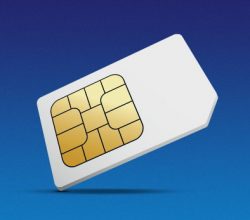 If you’re looking for a SIM-only deal with access to O2’s network, you can choose from a range of plans at the following providers:
If you’re looking for a SIM-only deal with access to O2’s network, you can choose from a range of plans at the following providers:
- giffgaff offers flexible SIM-only plans including 18 month contracts, monthly rolling plans, and Pay As You Go deals.
- O2 has some exclusive 12-month SIM-only deals that can save you money, as well as giving you access to the O2 Priority app.
- Sky offers 12-month SIM-only deals with flexibility and the ability to rollover your unused data for up to 3 years.
- Tesco Mobile offers SIM-only deals, with exclusive savings available for Tesco Clubcard members.
The following table shows a selection of the best value SIM cards with O2 coverage:
| Network | Data | Monthly Cost | |
|---|---|---|---|
| 10GB data | £6.00 per month 12 month contract | See deal |
Offer ends 28th Dec | 50GB data | £8.00 per month 18 month contract | See deal |
| 72GB data | £9.00 per month 12 month contract Monthly cost rising to £11.50 on 1 Apr 2026 | See deal |
| 300GB data | £16.00 per month 12 month contract Monthly cost rising to £18.50 on 1 Apr 2026 | See deal |
| Unlimited data | £20.00 per month 12 month contract | See deal |
Best for Unlimited Data
 If you’re looking for an unlimited data plan with O2 coverage, this is currently available from £20 per month on Sky Mobile.
If you’re looking for an unlimited data plan with O2 coverage, this is currently available from £20 per month on Sky Mobile.
You can compare the unlimited data offerings from giffgaff, O2, Sky and Tesco Mobile below (all of them will give you the exact same coverage):
| Network | Data | Monthly Cost | |
|---|---|---|---|
| Unlimited data | £20.00 per month 12 month contract | See deal |
| Unlimited data | £23.99 per month 24 month contract Monthly cost rising to £26.49 on 1 Apr 2026 £28.99 on 1 Apr 2027 | See deal |
| Unlimited data | £25.00 per month 24 month contract Monthly cost rising to £26.50 on 1 Apr 2026 | See deal |
| Unlimited data | £25.00 per month 18 month contract | See deal |
For more information, see our full guide to unlimited data plans in the UK.
Best for International Roaming
 If you regularly travel abroad, the best option is normally to get a SIM card either from Tesco Mobile or O2.
If you regularly travel abroad, the best option is normally to get a SIM card either from Tesco Mobile or O2.
- On Tesco Mobile, you can use your plan allowances abroad at no extra cost in 48 European destinations. Importantly, there’s no EU data cap to worry about – you can simply use all of the data from your plan when you’re abroad.
- On O2, you can use up to 25GB data per month at no extra cost in Europe. On top of this, if you’re a Volt customer or if you have a Plus plan, you’ll get inclusive roaming in another 27 destinations around the world as well.
On giffgaff, you can use your mobile phone abroad in Europe at no extra cost, but this is capped at a maximum of 5GB per month. On Sky, an additional fee of £2 per day applies in Europe and other ‘Roaming Passport Plus’ destinations.
Best for Customer Benefits
 If you’re looking for additional customer benefits, it may be best to get your SIM direct from O2. That’s because you’ll get access to their O2 Priority app, with regular savings and offers available each month. There’s also pre-sale access to thousands of gigs and events across the UK.
If you’re looking for additional customer benefits, it may be best to get your SIM direct from O2. That’s because you’ll get access to their O2 Priority app, with regular savings and offers available each month. There’s also pre-sale access to thousands of gigs and events across the UK.
Another option is to get a Sky Mobile SIM as this gives you access to the Sky VIP loyalty programme. If you’re a Sky TV or Sky Broadband customer, you may already have access to this.
Best for Pay As You Go
For a Pay As You Go SIM card that gives you access to coverage on O2, you can choose from the following providers:
- giffgaff: You can use giffgaff on a Pay As You Go basis without paying a regular monthly fee. If you do this, you’ll pay just 25p/minute, 10p/text and 10p/MB. Alternatively, you can get one-month rolling Pay As You Go bundle from £6. All of giffgaff’s plans give you 5G at no extra cost.
- O2: O2 offers a choice of Big Bundles and rolling plans on Pay As You Go. They start from £10 per month, and are restricted to 4G speeds.
The following table shows the best Pay As You Go plans with coverage from O2:
| Network | Data | Monthly Cost | |
|---|---|---|---|
| 2GB data | £6.00 per month No contract | See deal |
| 5GB data | £8.00 per month No contract | See deal |
| 20GB data | £10.00 per month No contract | See deal |
| 200GB data | £25.00 per month No contract | See deal |
| Unlimited data | £35.00 per month No contract | See deal |
For more information, see our guide to the best Pay As You Go SIM cards in the UK.
Mobile Networks Using O2 Coverage
Flexible plans, on Pay As You Go or an 18-month contract
giffgaff
| Plans From: | £6 per month (or Pay As You Go with no monthly fee) |
| Types of Plan: |
Pay As You Go & Pay Monthly |
| Coverage: | Uses O2 network (5G) – check postcode |
| Network Speeds: | Uncapped 5G speeds |
| Reasons To Buy: |
|
| Reasons To Avoid: |
|
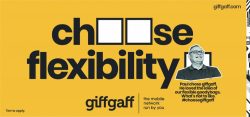 If you’re looking for a flexible mobile plan with no credit checks and with 5G coverage from the O2 network, giffgaff is one of the best options. You can use it on a traditional Pay As You Go basis (with no minimum monthly fee), on a monthly rolling basis, or on an 18-month contract.
If you’re looking for a flexible mobile plan with no credit checks and with 5G coverage from the O2 network, giffgaff is one of the best options. You can use it on a traditional Pay As You Go basis (with no minimum monthly fee), on a monthly rolling basis, or on an 18-month contract.
If you’re looking for traditional Pay As You Go, this costs 25p/minute, 10p/text and 10p/MB. The only requirement is that you’ll need to use your phone for a chargeable activity at least once every 6 months.
If you’re looking for a monthly rolling plan, these are currently available from £6 per month. As there’s no contract and no credit check, you can change or cancel your plan any time.
| Plan | Data | Monthly Cost | |
|---|---|---|---|
| 2GB data | £6.00 per month No contract | See deal |
| 5GB data | £8.00 per month No contract | See deal |
| 20GB data | £10.00 per month No contract | See deal |
| 26GB data | £12.00 per month No contract | See deal |
| 50GB data | £15.00 per month No contract | See deal |
| 100GB data | £20.00 per month No contract | See deal |
| 200GB data | £25.00 per month No contract | See deal |
| Unlimited data | £35.00 per month No contract | See deal |
Meanwhile, giffgaff’s best value deals are normally reserved for an 18-month contract. On these plans, you’ll need to commit to staying on giffgaff for a minimum of 18 months. However, you’ll still get the flexibility to change your plan over time (e.g. moving upwards or downwards within giffgaff’s 18-month range). You can do this at any time, without resetting the term of your commitment.
| Plan | Data | Monthly Cost | |
|---|---|---|---|
Offer ends 28th Dec | 50GB data | £8.00 per month 18 month contract | See deal |
Offer ends 28th Dec | 100GB data | £10.00 per month 18 month contract | See deal |
| 50GB data | £12.00 per month 18 month contract | See deal |
| 100GB data | £15.00 per month 18 month contract | See deal |
| 200GB data | £20.00 per month 18 month contract | See deal |
| Unlimited data | £25.00 per month 18 month contract | See deal |
All of giffgaff’s SIM-only plans come with inclusive EU roaming (up to 5GB per month). Apart from that, it’s pretty much a no-frills service. There are no customer offer apps (like O2 Priority and Sky VIP) and all of their customer support is provided through their website and app.
The ‘full fat’ service with Priority offers, Volt benefits & discounts on Extras
O2
| Plans From: | £6.99 per month |
| Types of Plan: |
Pay Monthly & Pay As You Go |
| Coverage: | Uses O2 network (5G) – check postcode |
| Network Speeds: | Uncapped 5G speeds (Pay Monthly) Uncapped 4G speeds (Pay As You Go) |
| Reasons To Buy: |
|
| Reasons To Avoid: |
|
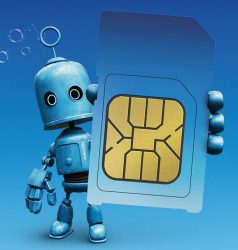 If you go directly to O2 for your SIM-only deal, there are three main benefits when compared to getting a plan from the other networks that use their coverage:
If you go directly to O2 for your SIM-only deal, there are three main benefits when compared to getting a plan from the other networks that use their coverage:
- You get inclusive EU roaming (up to 25GB per month). It’s a more generous allowance of EU roaming data than you’d get on other networks like giffgaff. On top of that, if you choose a ‘Plus’ plan or if you’re a Virgin Media customer as well, you get inclusive roaming in another 27 destinations outside Europe.
- You get access to the O2 Priority app. This gives you pre-sale access to thousands of gigs and events across the UK. There are also regular offers and prize draws available in the app.
- You can save on O2 Extras like Amazon Prime and TNT Sports. As an O2 Pay Monthly customer, you’ll be able to add some third party subscriptions like Amazon Prime and TNT Sports to your O2 mobile bill. When you do this, you’ll get a £2 per month discount on your phone bill.
If you go to the main O2 website, you’ll be able to choose from a range of Classic, Plus and Ultimate SIM-only plans (which are typically available on a 24-month contract). However, you can save by getting one of their exclusive 12-month SIM-only plans instead, which start from just £6.99 per month on a 12-month contract:
| Network | Data | Monthly Cost | |
|---|---|---|---|
| 12GB data | £6.99 per month 12 month contract Monthly cost rising to £9.49 on 1 Apr 2026 | See deal |
| 40GB data | £8.00 per month 12 month contract Monthly cost rising to £10.50 on 1 Apr 2026 | See deal |
| 72GB data | £9.00 per month 12 month contract Monthly cost rising to £11.50 on 1 Apr 2026 | See deal |
| 100GB data | £10.00 per month 12 month contract Monthly cost rising to £12.50 on 1 Apr 2026 | See deal |
| 175GB data | £14.00 per month 12 month contract Monthly cost rising to £16.50 on 1 Apr 2026 | See deal |
| 300GB data | £16.00 per month 12 month contract Monthly cost rising to £18.50 on 1 Apr 2026 | See deal |
Alongside their Pay Monthly plans, O2 also offers Big Bundles and rolling plans on a Pay As You Go basis. On their Pay As You Go plans, there’s no contract and no need for a credit check. However, you’re restricted to 4G speeds and you won’t be able to add O2 Extras to your plan.
SIM-only deals with data rollover, unlimited Sky TV data & VIP rewards
Sky Mobile
| Plans From: | £6 per month |
| Types of Plan: |
Pay Monthly |
| Coverage: | Uses O2 network (5G) – check postcode |
| Network Speeds: | Uncapped 5G speeds |
| Reasons To Buy: |
|
| Reasons To Avoid: |
|
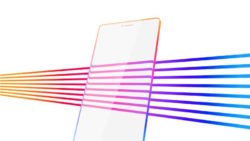 At present, you can get a SIM-only deal from £6 per month on Sky Mobile.
At present, you can get a SIM-only deal from £6 per month on Sky Mobile.
Alongside you getting the 4G & 5G coverage from O2’s network, there’s flexibility so you can switch plans at any time within Sky Mobile’s range. You’ll also get data rollover (for up to 3 years), unlimited data for streaming on Sky TV apps, and access to ‘Sky VIP’ rewards.
| Network | Data | Monthly Cost | |
|---|---|---|---|
| 10GB data | £6.00 per month 12 month contract | See deal |
| 50GB data | £11.00 per month 12 month contract | See deal |
| 5GB data | £12.00 per month 12 month contract | See deal |
| 40GB data | £18.00 per month 12 month contract | See deal |
| Unlimited data | £20.00 per month 12 month contract | See deal |
| 60GB data | £22.00 per month 12 month contract | See deal |
It’s worth noting that Sky is the only provider listed on this page not to offer an inclusive allowance of EU roaming data on their plans. Instead, you’ll need to pay £2 per day to use your mobile phone in Europe, as well as other selected destinations like the USA, Turkey and the United Arab Emirates.
Exclusive ‘Clubcard Price’ deals with inclusive EU roaming
Tesco Mobile
| Plans From: | £7.50 per month |
| Types of Plan: |
Pay Monthly |
| Coverage: | Uses O2 network (5G) – check postcode |
| Network Speeds: | Uncapped 5G speeds |
| Reasons To Buy: |
|
| Reasons To Avoid: |
|
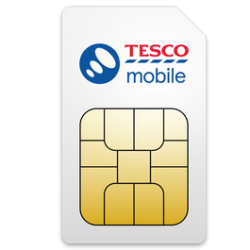 If you’re a Tesco Clubcard member, there are exclusive ‘Clubcard Price’ deals available on the Tesco Mobile network. All of their deals come with 4G & 5G coverage from the O2 network, plus inclusive roaming in 48 European destinations (with no fair usage cap).
If you’re a Tesco Clubcard member, there are exclusive ‘Clubcard Price’ deals available on the Tesco Mobile network. All of their deals come with 4G & 5G coverage from the O2 network, plus inclusive roaming in 48 European destinations (with no fair usage cap).
| Network | Data | Monthly Cost | |
|---|---|---|---|
| 2GB data | £7.50 per month 24 month contract Monthly cost rising to £7.95 on 1 Apr 2026 | See deal |
| 12GB data | £10.00 per month 24 month contract Monthly cost rising to £10.60 on 1 Apr 2026 | See deal |
| 30GB data | £11.00 per month 24 month contract Monthly cost frozen with Clubcard Prices | See deal |
| 100GB data | £15.00 per month 24 month contract Monthly cost frozen with Clubcard Prices | See deal |
| 250GB data | £22.50 per month 24 month contract Monthly cost rising to £23.85 on 1 Apr 2026 | See deal |
| Unlimited data | £25.00 per month 24 month contract Monthly cost rising to £26.50 on 1 Apr 2026 | See deal |
If you choose a Clubcard Price deal, you’ll benefit from frozen prices for the entire duration of your plan. Other SIM-only plans (that are taken without the Clubcard Price promotion) are subject an annual price increase in April each year.
Other Networks
At present, there are no other major mobile networks offering O2 coverage.
Prior to June 2023, Lyca Mobile offered 4G & 5G coverage from the O2 network. Nowadays, Lyca Mobile customers receive coverage from EE.
In addition, Virgin Mobile offered 4G & 5G coverage from O2 from July 2022 to August 2023. The Virgin Mobile network has now closed and all customers have been moved over to the O2 brand instead.
More Information
For more information, you can read our in-depth reviews of giffgaff, Sky Mobile and Tesco Mobile.
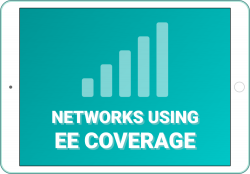
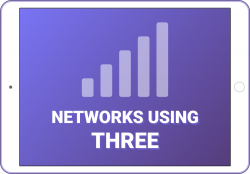
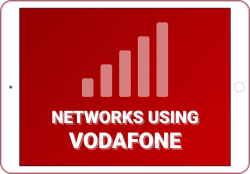
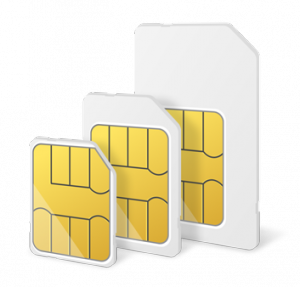
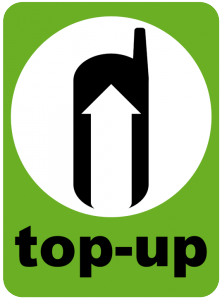
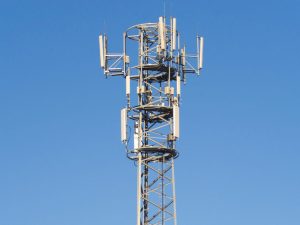
Phil said:
I live in a remote area and want to use 4g as my main broadband. O2 are the only ones who have a strong enough signal. They have an unlimited data deal, but the small print says you can only use it in a phone and not a ‘modem’. Seems crazy, as I could tether a phone and use just as much data, but it would be messy compared to a dedicated 4g router/modem… I’ll probably need about 400Gb per month.
NickP replied:
You are allowed to use a phone SIM for data in a modem or router.
https://kenstechtips.com/index.php/sim-cards-for-your-tablet-dongle-router-or-iot-device
Joseph hague said:
I have been a giffgaff customer for a few years now,and have been very happy with it,until my internet connection went and there is no one to contact about it?
M bethell replied:
You can look on giffgaffs website and email a adviser with you problem. To be fair I have been with giffgaffs for years and if I have ever had I problem it has been sorted out in a timely manner
Grant said:
I want a low usage tariff like O2’s ‘Classic Pay As You Go’, but I am confused by their terms and conditions.
In one section it states you must Top Up every 6 months
Classic Pay As You Go
When you join Classic Pay As You Go, you pay for what you use, as you go. The minimum
top up requirement is £10.
‘If you don’t top up, or add a Bolt On at least once in any six month period, your mobile will be
disconnected and you’ll lose any credit on your account. If you want to be reconnected you’ll
be given a new mobile number.’
But in the Terms and Conditions paragraph 7.1. it states that you are only required to use the SIM every 6 months
7.1. If you do not carry out any chargeable activity at least once in any 6 month period your
Mobile Phone will be disconnected and you will lose any remaining credits balance on your
Account. If you wish to be re-connected after this time you will be given a new Mobile Phone
number.
Do I have to only use the SIM every 6 months as it states. Or do I need to ‘Top Up’ £10 every 6 months as well as using the SIM?
Ken replied:
Hi Grant,
Thanks for your comment. This is a question that lots of people have discussed in the comments on my full guide to O2 Classic Pay As You Go. I believe the general consensus is this was sloppy wording from O2, and you just had to use your phone for a chargeable activity once every 6 months. However, if this is likely to be an issue, I’d recommend double-checking directly with O2.
Ken